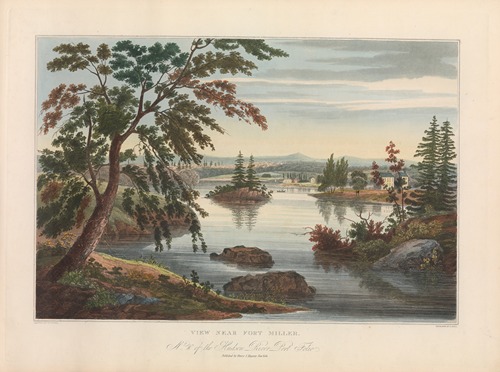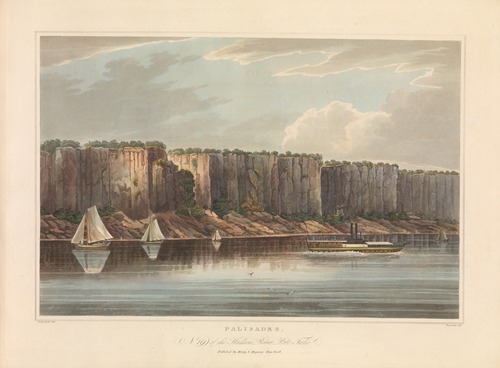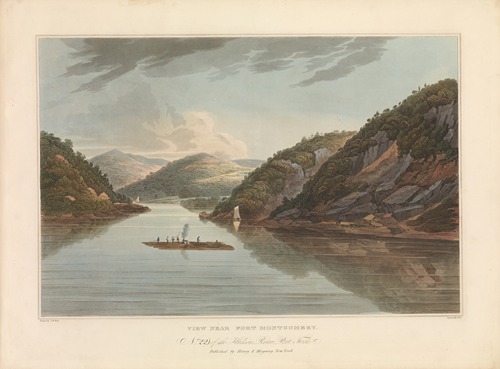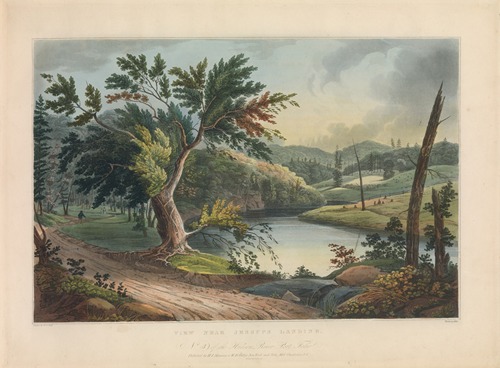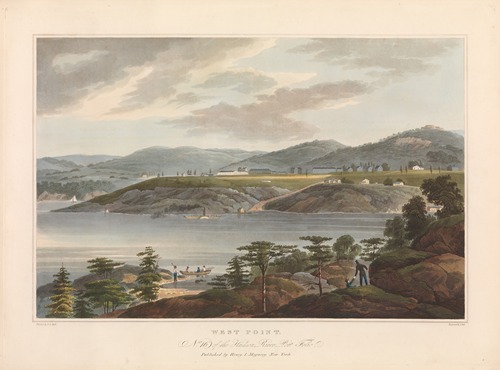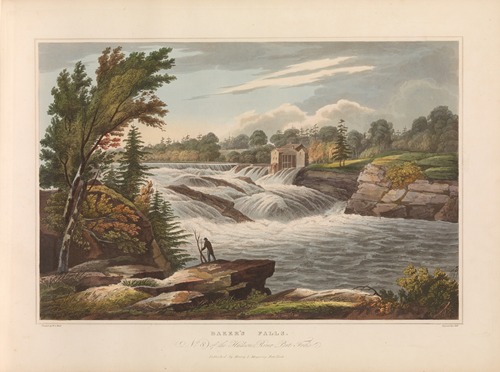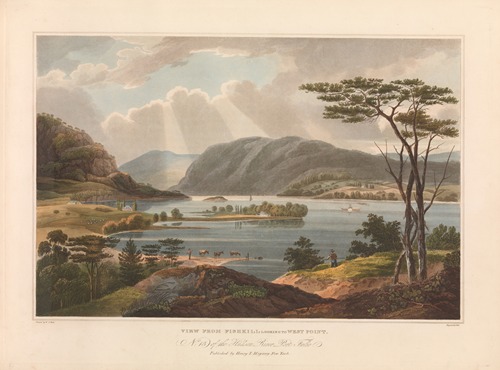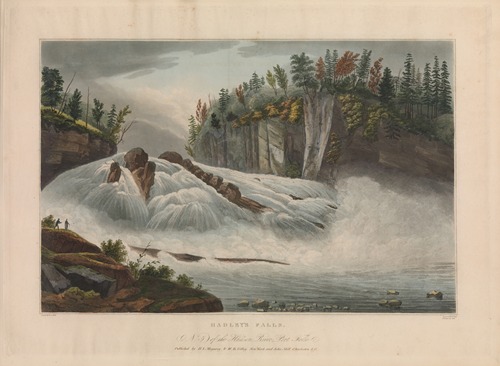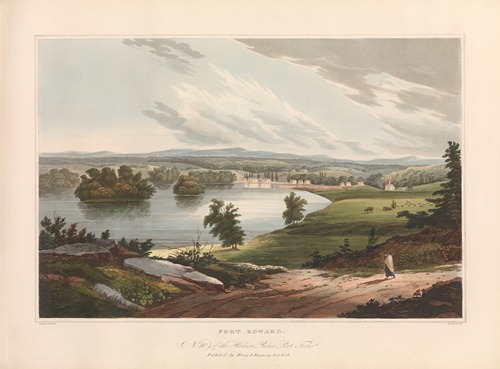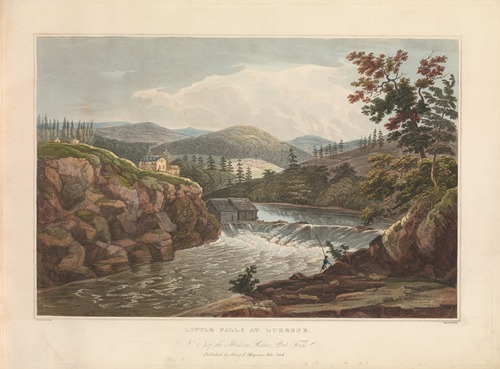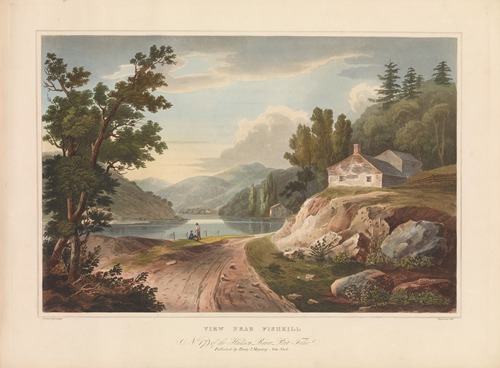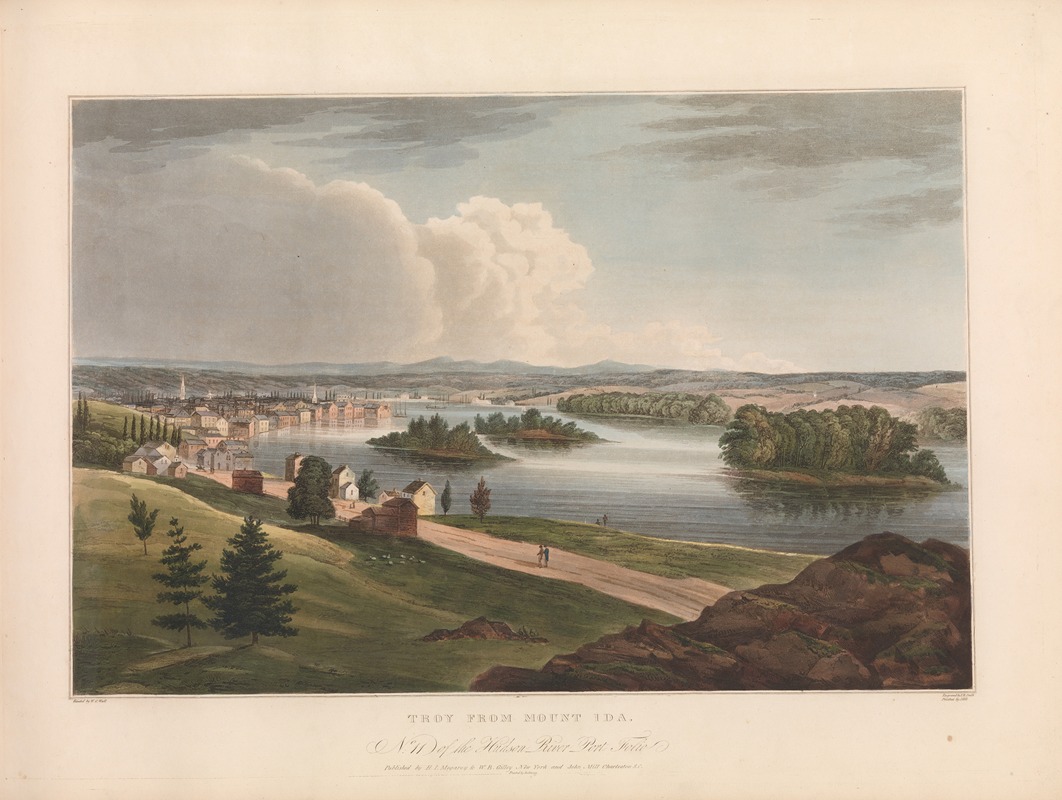
John Hill was born in London in 1770, and was apprenticed as a youth to an engraver in that city. He became interested in the process of aquatinting, a technique wherein a metal plate is etched several times in order to create tonal gradations, resulting in a print that is easier to hand-color due to the variety of subtle tones produced. Hill began working in London under his own name in 1798, and mainly produced aquatints that were used for book illustrations.
In 1816, in order to support his family of six children, John Hill immigrated to Philadelphia, then a major center of publishing in the United States. His earliest American engravings were mainly city views, which were, as in England, published as book or magazine illustrations. He was able to earn enough in America to bring his family to join him in 1819. Most members of Hill's family, including his wife and daughters, worked alongside him in some capacity, helping pull proofs or hand-color prints. Hill's son, John William Hill (1812-1879) became a skilled painter as well as an engraver and assistant to his father.
Aquatint was little known in the United States in 1816 and Hill quickly became the pre-eminent artist in the medium. In 1819 he began his first major commission, engraving plates after paintings of American urban and rural views by Joshua Shaw. Twenty plates of these Picturesque Views of American Scenery were published in four separate issues from 1820 to 1821. Most of these plates were hand-colored by Hill and his family. Picturesque Views of American Scenery is considered to be the first major plate book published in the United States.
Shortly after the completion of Shaw's views, Hill was commissioned by New York printer Henry J. Megarey to engrave and color views of New York after the painter William G. Wall. The resulting Hudson River Portfolio (1821-1825) contained twenty views of New York State towns, cities, and landscapes. In 1822 Hill moved to New York City in order to work more intently on the Portfolio.
While in New York, Hill engraved several city views, including one of City Hall. The practice of aquatint flourished in the 1820s and 1830s, as did Hill's reputation and business. He issued many single engravings, including sporting prints, and illustrated his own drawing book, as well as several other books. Between 1830 and 1832, Hill engraved a series of five Erie Canal views after paintings by his teenage son John William Hill. Few of these views were ever finished as completed prints.
In 1837, Hill and his wife moved to Rockland County, New York, where they had purchased land near West Nyack. Hill died in 1850.
